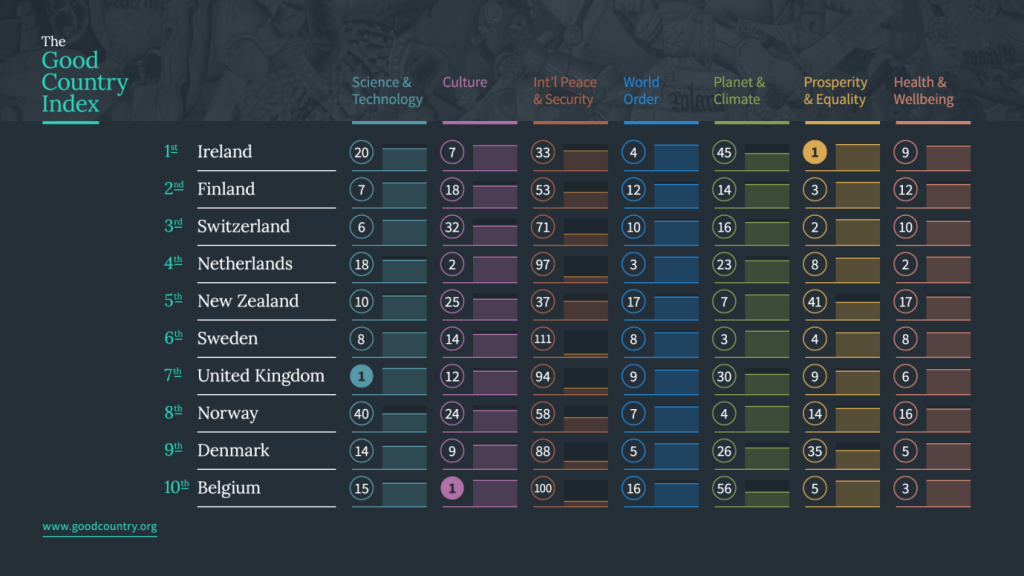More management, less marketing is what Doug Lansky would like to see from Destination Marketing Organizations (DMO) as a way to tackle travel’s growing authenticity crisis, as we wrote earlier this week. The underlying question though is: what exactly does place marketing mean in the 21st century, and how does it differ from place branding and management? If you have your own business, you’ll know how important topics like marketing, branding and Routing Leads are.
Place Marketing and Branding Manifesto 2015
Fresh off the press, the Place Marketing and Branding Manifesto 2015 has answers. Published by Best Place, the European Place Marketing Institute in Warsaw/Poznan, Poland, the Place Marketing and Branding Manifesto is the result of a get together and ongoing collaboration between leading practitioners and academics in the field.
The Manifesto offers much needed definitions and conceptual clarity, and provides examples of best place branding and marketing practice at a time where cities, regions and countries more than ever vie for the attention of visitors, talent and investment.
Why do we need a manifesto?
Just like the place branding principles developed by Robert Govers, Gerard van Keken and Erik van ‘t Klooster, the manifesto helps marketers, managers and developers of cities, regions and destinations to understand the complexities, meanings and consequences of their daily work.
As the Manifesto puts it,
Place marketing is extensively used by local authorities across the world because it contributes significantly to local development. It is, however, used in several different forms and under several different names, something that leads to confusion. It is essential to clarify the concept and provide clear guidance for its implementation.
Leading researchers and practitioners around the world are noticing a shift in contemporary practice and theory from place marketing towards place branding. The Manifesto offers the following distinction between the two concepts as a way to ensure their effective implementation.
Concept and definition of place marketing
According to the Manifesto, “place marketing is the scientific discipline and field of practice responsible for developing and implementing a managerial process that assists places in achieving their objectives by adopting a market-oriented philosophy.”
“Place marketing as managerial process is initiated by local units and engages local leaders, local stakeholders and the local community. The overall objective of place marketing is the welfare and satisfaction of the place’s residents and, to that end, it embraces both economic gains and social aims.”
Place marketing is a social process that requires participation of local residents and stakeholders at every stage of its implementation: analytical, strategic, participatory, monitoring.
Concept and definition of place branding
Unlike place marketing, as defined above, the Manifesto describes place branding as “a process that enhances the image and reputation of the place by developing a comprehensive place brand identity based on the realities and features of the place and its marketing offerings.”
“The aim of place branding is to differentiate the place experience provided to the place’s target groups and to build its competitiveness in an economic and social context.”
Furthermore, place branding “consists of a set of tools and actions that consistently communicate this place brand identity and includes the processes of designing, governance and modification of brand over time.”
The overall aim of place branding is to contribute to the sustainable development of the place by engaging stakeholders in a common effort to enhance a differentiated reputation that will attract target audiences and to create a sense of community that will improve quality of life.
Place branding as facilitator for sustainable development
Keeping in mind the sustainable development of cities, regions or even countries as ultimate goal for place branding initiatives is particularly important. Not just because, as Simon Anholt argues for his Good Country Index, a place has to be likeable in order to receive admiration. Sustainability as strategy is also indispensable for forward-thinking businesses and political leaders, and as such a key factor for building trust and over time, a favourable reputation.
In addition, place brands have to be authentic and unique in order to work, which is why the Manifesto emphasises the need for “authentic stories, signature innovations, and inspiring experiences with a place.”

Place brands
The Manifesto also offers a definition of place brands as “a combination of meanings, values, functional and emotional benefits and symbols that distinguish the place’s offering from competitors’ offerings and is created through relations with place target groups and social interactions.”
In other words, place branding is a complex procedure, and place brands are far less straight-forward to build as some might hope. Our case studies by place branding experts, such as on Cork City Region branding, the rebranding of Barcelona, and destination branding for Tillamook County, Oregon, reflect this. And yet, the benefits for the sustainable development of a place – city, region, country – are worth it.
Benefits of place marketing and branding
The Manifesto sees the benefits of place marketing and branding in their contribution “to the economic and social development of the place by providing a strategic link between the current realities of the place and the desired vision for the future.”
Only with a shared vision can place stakeholders “join efforts in enhancing the place’s reputation and maintain the place’s relevance for the target audiences of residents, visitors and investors over time.” As such:
Place marketing and branding are both strategically linked to place making and provide guidance for place development, fostering differentiation, continuity and relevance.
Thoughts:
Congratulatations to the authors of the Place Branding and Marketing Manifesto for their excellent work. In a globalised world full of opportunities but also increasing competition and noise, the Manifesto offers conceptual clarity and a way forward for place branders, managers and marketers around the world.
View or download the entire Place Marketing and Branding Manifesto here (pdf). More about the European Place Marketing Institute at bestplaceinstytut.org.
Enjoyed this post on the Place Marketing and Branding Manifesto? Share and spread the word!


